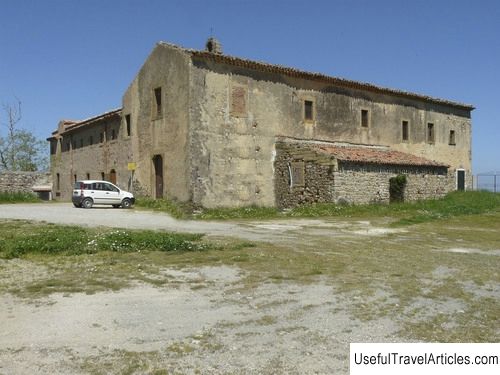Capuchin Catacombs in Italy, Sicily resort
Rating: 8,8/10 (4619 votes)  The Catacombs of the Capuchins of Palermo are burial catacombs, where the remains of prominent citizens and the local elite lie in the open. Currently, the catacombs are one of the most famous exhibitions of mummies – the compositions are formed by the mummified, embalmed and skeletonized bodies of the deceased. The catacombs are located outside the historic part of the city, under the Capuchin Monastery. In the 16th century, the number of inhabitants of the monastery increased significantly, and therefore it was decided to organize a decent and spacious cemetery for the brethren. For this, the monastery crypt under the temple was adapted. At the end of the 16th century, Brother Silvestro of Gubbio was buried here, later, the relics of previously deceased monks were transferred here. Over time, the crypt became rather cramped, and the Capuchins had to break through a long corridor in which the bodies of the monks were placed. The donors and benefactors of the monastery also wanted to be buried in the catacombs. Several additional corridors with cubes were created for new burials. Until 1739, the decision on burial in the catacombs was taken by the archbishops of Palermo or the leaders of the Capuchin order. In the XVIII – In the 19th century, the catacombs were a prestigious cemetery for bourgeois and noble families, as well as clergy. In 1882 the catacombs were closed for burials. By exceptional petition, after closing, several more bodies of the deceased were also buried here, among them Rosalia Lombardo and Giovanni Paterniti. In the 17th century it became clear that the atmosphere and soil characteristics of the catacombs prevent the decomposition of bodies. Before being placed in the catacombs, the bodies were dried in special chambers for eight months. After that, the remains were washed with vinegar and dressed in the best clothes and placed in cubes. In most cases, the bodies of the deceased were displayed, hung or laid open on shelves and niches. The method of preserving bodies was modified during epidemics – the bodies of the deceased were immersed in solutions or diluted lime containing arsenic, then the bodies were also exhibited in the catacombs. In 1837, a ban on open burial was introduced, which could be violated only at the request of relatives and testators. Usually, a window was left in the coffins, or one wall was completely removed so that the remains could be seen. As the number of buried bodies increased, the catacombs gradually expanded. New corridors were dug, which in the future were named – Monks' Corridor, Men's Corridor, Women's Corridor, Children's Cubicle, Virgin's Cubicle, Professional Corridor, New Corridor, Priestly Corridor, Chapel of Saint Rosalia.   We also recommend reading Palazzo Isnello in Italy, Sicily resort Topic: Capuchin Catacombs in Italy, Sicily resort. |




